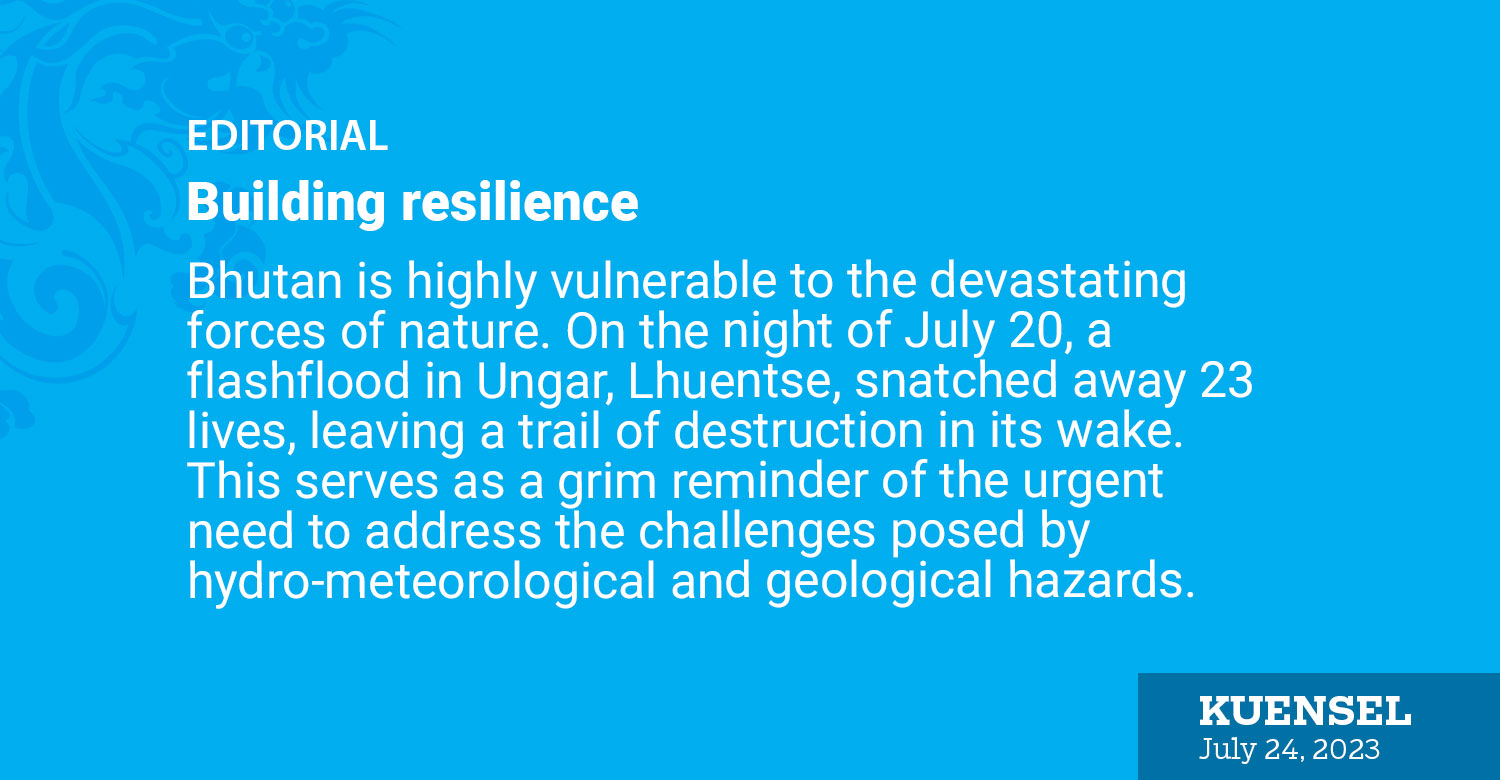Bhutan is highly vulnerable to the devastating forces of nature. On the night of July 20, a flashflood in Ungar, Lhuentse, snatched away 23 lives, leaving a trail of destruction in its wake. This serves as a grim reminder of the urgent need to address the challenges posed by hydro-meteorological and geological hazards.
For Bhutan, the threat of floods, glofs, landslides, and windstorms is an ever-looming spectre, especially for the communities settled along river basins. Over 70 percent of our settlements lie in these vulnerable zones, exposing our people, properties, and livelihoods to such peril.
History has been witness to the tragedy caused by relentless natural forces—the 2009 Cyclone Aila, claimed 12 lives and left USD 17 million worth of damage, and the 1994 glof robbed 21 lives and laid waste to property along the Punakha-Wangdue valley.
As the world grapples with long-term global climate change, we must acknowledge the undeniable link between extreme weather events and the changing climate. Although attributing a single disaster to climate change is complex, the reality remains—the frequency and intensity of these events are on the rise.
Bhutan cannot escape the clutches of climate change, and therefore, we must rise to the occasion and embrace resilience as a way of life.
We must first foster a culture of awareness and preparedness. Investing in cutting-edge early warning systems, disaster response training, and community drills can significantly reduce the loss of lives. Empowering local communities with knowledge and resources to tackle emergencies will be crucial in our collective fight against nature’s wrath.
Furthermore, we must reimagine development through the lens of climate science. Integrating climate-resilient designs into our infrastructure projects is not merely an option but a necessity. Our hydropower facilities, agricultural lands, roads, bridges, and buildings must be constructed to withstand the relentless onslaught of natural disasters.
As the embers of tragedy continue to smolder, we stand at the precipice of a defining moment. We can no longer afford to be passive observers. The cost of proactive planning pales in comparison to the catastrophic aftermath of unchecked destruction.


